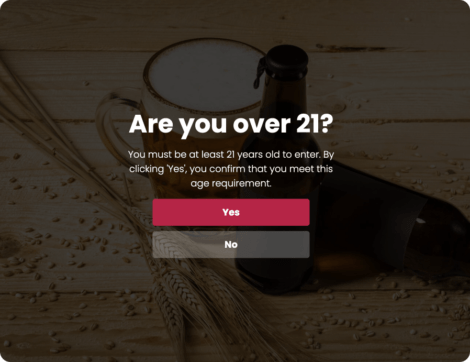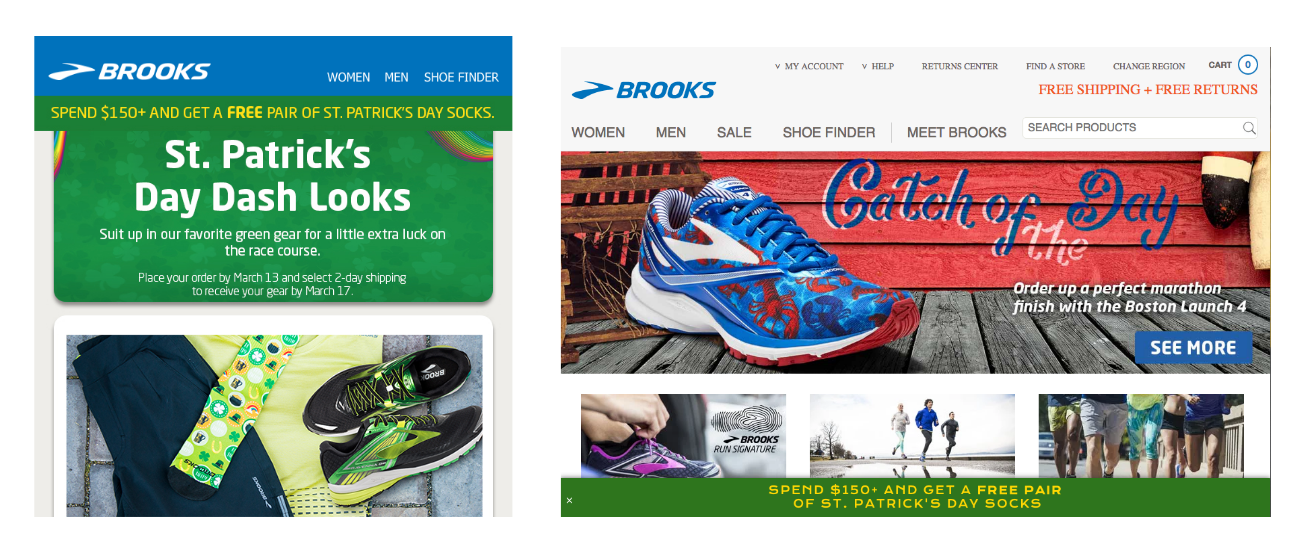By now, you are probably well aware that the ultimate goal of your marketing efforts is lead conversion. Therefore, your lead generation activities and marketing initiatives must be successful in turning leads into paying customers. However, for many marketing experts, lead conversion is a huge hurdle. In fact, according to The State of Lead Conversion in Marketing and Sales, a little bit over 10% of them are satisfied with their lead conversion abilities. This problem is made worse by the fact that many business owners and marketers are unaware of their lead conversion rate, which makes it impossible for them to gauge how well or poorly leads are converting.
In this post, we will help you understand what lead conversion rate is and how to calculate it. You can then develop lead conversion strategies and learn how to measure their success in order to maximize their efficiency.
What Is a Lead Conversion Rate?
A lead conversion rate is the percentage of users who complete a desired action, such as making a purchase, signing up for a service, or filling out a web form.
A high lead conversion rate indicates that your site is efficiently formatted, well-designed, and your target audience finds it appealing. A poor conversion rate, on the other hand, could be caused by a number of elements that affect the functionality or aesthetics of a website, including malfunctioning forms, lengthy load times, or ineffective copy.
Your niche, industry, business objectives, traffic source, and target audience are just a few of the variables that affect your lead conversion rate. For instance, in the third quarter of 2022, the average worldwide conversion rate for eCommerce websites was 2.1%. However, the average varies not only by year and country but also by niche. For instance, the home and beauty industry had the greatest eCommerce site conversion rates in the third quarter of 2022, at 3.3 percent. Websites in the food and beverage and haircare industries came in second and third, with conversion rates of 3.0 and 3.1 percent, respectively.
How to Calculate Your Lead Conversion Rate
To calculate your lead conversion rate, divide the total number of conversions by the total number of visitors, then multiply the result by 100.
For example, if you are defining conversion as someone signing up for your newsletter, you will need to divide the total number of newsletter form submissions by the total number of website visits, then multiply it by a hundred to get a percentage. Therefore, if you had 10,000 visitors and 200 submissions over the previous quarter, your lead conversion rate would be 2%.
9 Strategies for Improving Your Lead Conversion Rate
If your lead conversion rate is lower than you’d want, it’s time for conversion rate optimization. Since conversions can happen on your website’s landing pages, pricing page, blog, and other pages, you should optimize each place in order to increase your chances of turning site visitors into customers.
- Start by optimizing your lead capture strategy
Before you can start converting leads into paying customers, you must first “catch” those leads. In other words, you have to get a website visitor to become a lead before you can get them to become a client or customer. Optimizing your lead capture approach is the first thing you should do in order to improve your average conversion rate.
The key to enhancing the way you capture leads is to focus on gathering the proper data. In addition to the basic information, such as a lead’s name and email address, you could also require other details to better qualify website visitors. Website pop-ups, lead-capture forms, and lead-capture pages are some of the most effective ways to collect the necessary information from your users.
Your business’s type and objectives will determine the best method for capturing leads. Once you have decided that, you should consider how you may improve the lead capture process. For instance, you can modify each campaign’s lead-capture strategy. In addition, you can change the call to action (CTA) and include a valuable offer (lead magnet) to entice more visitors to become leads.
- Optimize your lead qualification process
By changing your approach to lead qualification, you can improve the quality of each particular lead and boost your lead-to-sale conversion. Simply put, better lead qualification will bring you more deals. By adjusting your lead qualification approach, you can improve the quality of each individual lead and increase your lead conversion rate.
To do this properly, you must coordinate your sales and marketing teams and make sure they are in agreement about what it takes to convert a lead into a sales-qualified lead (SQL), marketing-qualified lead (MQL), etc.
Lead scoring can be useful if you’re having difficulties getting your sales and marketing departments to align on SQLs and MQLs. Lead scoring allows you to identify where a lead fits into the sales funnel by awarding points for actions that the lead does. It also aids sales representatives in prioritizing leads and choosing the appropriate follow-up procedures. In addition, it makes sure that both teams are classifying leads in the same way. When a lead is well-qualified, it has a higher chance of converting once it is in the hands of your sales team.
- Nurture your leads better
The next step is to start better nurturing your leads. But what does “lead nurturing” mean? Simply put, lead nurturing is cultivating leads to increase their interest and prepare them for sales. One of the most effective lead-nurturing strategies is email marketing.
The process of using email marketing to engage your leads with the aim to turn them into customers is called email nurturing. When nurturing leads via email, the key is to offer valuable and relevant content. In order to do this, you should rely on the data you have gathered on your leads. This will allow you to deliver content that piques their interest, aligns with their goals, and helps them solve their pain points.
- Offer quality content
The best content does more than just draw in visitors and get a bunch of shares; it educates your audience, helps you win their trust, and maintain a positive rapport with them. This calls for the creation of a rather substantial library of content that is tailored to various stages of the sales funnel and geared to certain buyer personas, including website copy, blogs, ebooks, white papers, etc.
Be sure not to overlook SEO as well. Better visibility on search engines can help generate more leads for your business. So, put some effort into improving your SEO methods and, as a result, your search engine rankings. The page title, page URL, page header, internal links, and page content are the five main SEO factors on which you should focus your attention.
- Leverage social proof
Social proof might influence leads who are considering your product or services to make a purchase. Customer testimonials and reviews are examples of social proof because they give leads insight into what other people have said about your brand. They work best when applied to leads who are at or near the decision-making stage. As a result, they are often used on pricing pages and landing pages. Another great use case for them is in an exit offer targeting visitors who are leaving your site or abandoning their cart.
User-generated content (UGC), which you can use in your social media and email marketing content, is another excellent use of social proof.
- Use retargeting
Retargeting is a great way to reach leads that have previously thought about your brand but weren’t quite ready to buy. When you retarget these leads, you can reintroduce offers or present new ones that are more in line with their interests.
Retargeting works by tracking visitors to your site and displaying online ads as they visit other websites around the internet. This is especially effective when you retarget users who visited your highest-converting pages. The standard inbound guidelines still apply; for retargeting to be effective, you need carefully produced copy, eye-catching imagery, and an alluring offer.
Justuno helps you do this even more effectively through Audience Sync, by sending your newest subscribers directly to Facebook & Google audience managers you can increase ad campaign relevancy and conversion rate from those who didn’t purchase the first time.
- Test your landing pages
As was already mentioned, landing pages are a crucial component of lead conversion and an essential instrument in the arsenal of the contemporary marketer. This is because a landing page is where visitors convert to leads.
Running A/B testing helps you optimize your landing page by determining the best content and design features. For example, you can test various versions of your form questions, website copy, graphics, content offers, and web pages to see which of these versions your target audience responds to the best.
- Follow-up with your leads
Following up with your leads is necessary in order to stay connected. When you follow up with your target audience regularly, they get the impression that you genuinely care about their needs and are ready to provide them with the products and services they want.
But what is the best channel to use for this purpose?
Phone calls and email are the two most common communication methods to follow up with leads, used by 36% and 37% of respondents respectively, whereas only six percent of respondents use SMS messages for this purpose. However, considering the fact that SMS is much more effective than email, with 98% of text messages being read, as opposed to 22% of emails, it may be time to reevaluate your communication approach and determine whether phone and email are really the best options.
- Give your sales team the right tools and resources
Having two divisions within your sales staff is always a good idea; one handles all of your current customers, and the other manages all of the new leads your company generates.
In addition, consider using an effective customer relationship management (CRM) system to track your prospects’ sales progress and other related activities.
You can also employ specialized personnel to keep an eye on and distribute leads to various sales managers. This will help your sales staff to manage all incoming leads and supervise their sales funnel throughout the whole purchase process.
Ways To Measure the Success of Your Lead Conversion Strategies
The most important metric to measure the success of your lead conversion strategies is the lead conversion rate — the ratio of total visitors to the number of leads generated (which we explained at the beginning of this article and shared a specific formula to calculate it).
However, there are a few more lead conversion metrics that you should be aware of:
Lead-to-sale conversion rate. This metric refers to the percentage of total generated leads to the number of leads that actually converted to paying customers. It depends on a variety of variables, such as how many new leads you bring into your funnel, how effectively you qualify leads, and the effectiveness of your lead-nurturing strategy. You can calculate your lead-to-sale conversion rate with the following formula:
Converted leads / the total number of generated leads x 100
Time to conversion. Time to conversion basically shows how long it takes for visitors to convert to leads. To calculate it, you need to divide the total amount of time visitors spend on your site by the total number of leads.
Lead to opportunity. Using this metric, you can determine the percentage of leads that convert into sales opportunities. Tracking the lead-to-opportunity metric will give you the necessary information for enhancing and optimizing your lead conversion efforts.
Lead value. The lead value metric indicates the value of each lead generated to the success of your business. To obtain lead value, divide the total sales value by the total number of leads.
Cost per conversion. You can use this metric to determine how much it costs your company to attract each new customer. The formula for obtaining this sales conversion rate metric is straightforward: Add all advertising and marketing costs and divide by the number of leads that were converted.
Conversion ROI. This metric shows the ROI you gain from each conversion. To calculate your conversion ROI, you need to subtract the cost from the lead value and then divide everything by the cost.
The above-listed metrics give you the ability to examine the success of your lead conversion strategies in a more meaningful way. Therefore, by keeping track of them, you can avoid guesswork and get better, quicker results.
The Bottom Line
In order to convert leads into paying customers, you must nurture those leads properly throughout their sales journey. Determine your lead conversion rate and keep track of their progress to identify any opportunities your brand may be missing when it comes to lead conversion. Then, you can use the lead conversion strategies listed in this article to boost your performance. Make sure to experiment with different tactics and be sure to always apply metrics that will help you measure the success of your strategies. This way, you will be able to determine whether you are on the right track or if you need to make adjustments in order to see better results for your business.
Want to see how our team of conversion specialists can improve your website experience and conversion rate? Book a 100% free conversion audit today and see just what an optimized CX can do for your business.



